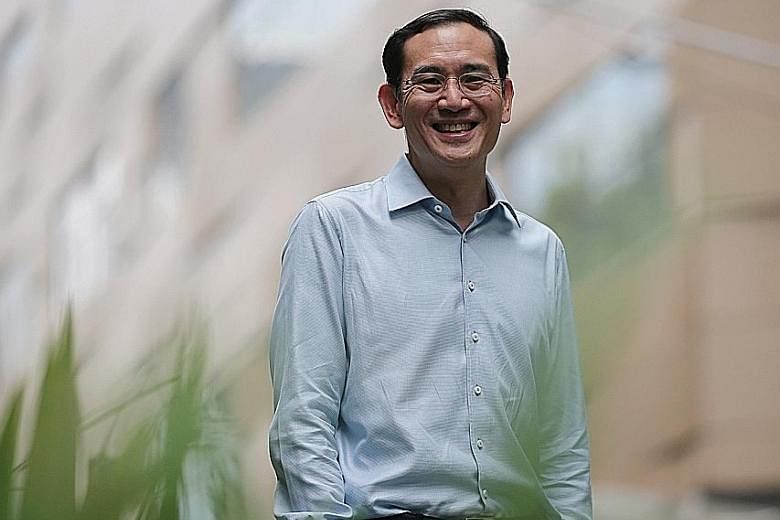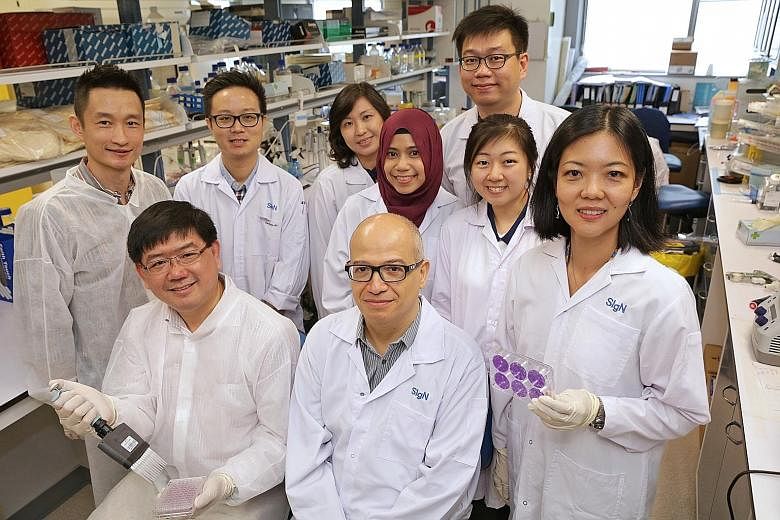The genome of Sars-CoV-2, the virus which causes Covid-19, was sequenced on Jan 11, less than two months after the first cases of atypical pneumonia were reported in Wuhan, China.
Four months later, there are at least 130 vaccine candidates being developed by biotechnology and pharmaceutical companies, as well as academic groups globally.
As of end-May, 10 experimental vaccines have entered into clinical trials, with the front runners planning to obtain emergency-use authorisation before the year end.
Chinese biopharmaceutical company CanSino Biologics was the first last month to publish human safety and immune response data for its vaccine candidate.
This tempo in development is unprecedented, as it could previously take up to 10 years or more to make a vaccine. In fact, the fastest any new vaccine had taken to obtain regulatory approval was five years, this being the Ervebo vaccine to prevent Ebola virus disease.
These developments have triggered an intense international race to produce the first effective and safe vaccine for Covid-19, with some governments taking early bets on prospective candidates.
The United States launched Operation Warp Speed to secure vaccines for its population.
It has so far invested more than US$2 billion (S$2.8 billion), including US$1.2 billion to support a joint project between the University of Oxford and drug-maker AstraZeneca.
This could see the US receive 300 million doses of the vaccine as early as October, although there are no assurances that it will work.
Pharmaceutical giants like Johnson & Johnson, Novartis, Merck and Pfizer have joined the race.
The announcement by Paris-based Sanofi, the world's third-largest vaccine producer, that the US has first rights to its vaccine provoked outrage across France, including from French President Emmanuel Macron.
At the 73rd World Health Assembly last month, Chinese President Xi Jinping pledged to make China's coronavirus vaccines available globally.
THE VACCINE TECHNOLOGY LANDSCAPE
No single company or country is likely to meet the global demand for the billions of doses of vaccine necessary to bring an end to the pandemic.
The ideal vaccine against Covid-19 should effectively trigger the immune system to prevent infection, be safe for use by the elderly and those with chronic diseases, have long-lasting effect, be manufactured quickly and inexpensively at large scale, and be easily stored and distributed.
What is also very different for Covid-19 is the number of vaccine technologies that are being developed, including several that have never been licensed for clinical use.
These include RNA and DNA vaccines, as well as viral vectors that carry genes encoding for coronavirus proteins.
Traditional approaches make use of viruses that have been chemically inactivated or weakened.
This has the advantage of being closest to an actual infection and results in a stronger immune response.
There are, however, more side effects, including a potential concern that the antibodies produced may end up worsening the disease.
The manufacturing process is also well established, but as it involves growing the virus in animal cells, it can be time-and resource-intensive.
This further requires a factory with a high level of biosafety to handle live viruses.
With advances in molecular biology, new vaccine technologies have now been created.
Nucleic acid sequencing has revealed the genetic blueprint of the coronavirus and allowed its protein composition to be decoded.
This allows scientists to recreate and generate part of or the whole virus in the laboratory, as well as to develop new vaccine modalities.
Nucleic acids like RNA and DNA can be manipulated in various ways, and manufactured quickly in large quantities.
The challenge is that nucleic acids are less stable and not easily delivered on their own.
American biotechnology company Moderna, currently leading the pack, delivers its mRNA vaccine within a nano-sized lipid particle.
Inovio, another front runner, delivers its DNA vaccine by electroporation, using a controlled electric pulse to inject the vaccine past the cell membrane.
A more elegant approach uses specially engineered and innocuous viral vectors, such as adenoviruses - a group of common viruses - to deliver the coronavirus genetic payload to the body's immune system.
Adenoviruses are good at getting into cells and induce a strong immune response.
They can also be allowed to replicate within the human host, providing longer-lasting immunity.
Another approach is to create vaccines using protein sub-units of the coronavirus.
Such proteins can be synthesised in the laboratory using genetic material derived and modified from the coronavirus.
They may be combined with molecules known as adjuvants, to boost the immune response at lower doses.
TAKING A VACCINE TO THE MARKET
Notwithstanding the initial optimism, and in spite of the latest knowledge and technologies, it could still take more than a year to deliver a coronavirus vaccine to the masses.
The first step is to demonstrate that the new vaccine produces antibodies that can neutralise coronavirus in the laboratory.
This is followed by a challenge test, where live virus is introduced into a vaccinated animal to study its immune response and protective effect.
Once scientists have enough data to be convinced that the virus is both safe and effective, clinical trials involving human subjects can begin.
In phase one, healthy volunteers are injected with the trial vaccine to assess its safety and immunogenicity - its ability to provoke an immune response.
The aim is to find the right dose that elicits a strong immune response without causing serious side effects.
In phase two, hundreds of people are vaccinated and closely monitored to see if this protects them from the virus.
This progresses to phase three, where up to tens of thousands of people are vaccinated in a real-world setting, to see if vaccination reduces the risk of infection, compared with those who have not been vaccinated.
The subjects are closely followed up with for any side effects.
The industry experience is that about 90 per cent of vaccine projects do not go beyond this stage.
If all the boxes are ticked, the company then seeks regulatory approval for a licence to market the vaccine.
At the same time, planning takes place to set up factories to manufacture hundreds of millions of doses of the vaccine under stringent conditions, and to package the final product in individual vials or syringes for shipment.
The health authorities will then have to put in place a national Covid-19 immunisation programme, prioritising high-risk and vulnerable groups within the population to receive the vaccine first.
The programme will then need to be expanded to achieve herd immunity, where enough people in the population develop immunity to the virus such that it can no longer propagate and be transmitted.
Assuming all this happens in time, there remain further questions that need to be addressed.
• Will a booster dose be needed to confer longer-lasting immunity?
• Will the virus mutate and make current vaccines less effective?
• Will enough people be convinced about the safety and efficacy of the vaccine to agree to be vaccinated?
• Will there be equitable distribution of vaccines between high-and low-income countries, and within each country?
With the race to make a Covid-19 vaccine elevated to the global stage, we are now witnesses to an interplay between science, biotechnology, public health, markets, governments and civil society.
It remains to be seen how the pandemic will evolve, and what role a vaccine will eventually play in bringing it to an end.



